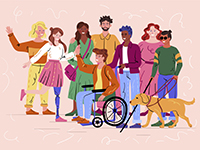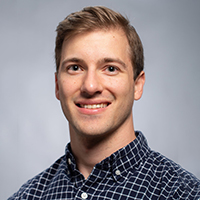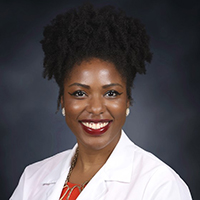 To date, 61 million adults in the United States live with a disability, accounting for 26% of the population, or one in four individuals.
To date, 61 million adults in the United States live with a disability, accounting for 26% of the population, or one in four individuals.
The UAB Marnix E. Heersink School of Medicine, Department of Physical Medicine & Rehabilitation, and Office of Diversity and Inclusion would like to recognize Dec. 3 as International Day of People with Disabilities.
Disability is defined as any visible, invisible, emotional, social, and educational challenges that are a part of normal, everyday life. The term can refer to a medical diagnosis, a barrier, and/or a person’s identity. International Day of People with Disabilities recognizes individuals who live with disabilities and suffer the impact of marginalization, discrimination, and vulnerability.
Hear from experts
Jereme Wilroy, Ph.D.
 Why is it important to bring awareness to this day?
Why is it important to bring awareness to this day?
"It is important to bring awareness to this day because people with disabilities make up about a quarter of the world population and almost every person will be affected by disability in their lifetime, whether through their own life experience or a loved one. These individuals have the most critical need for health-enhancing interventions yet there is not enough work being done in this area. In addition, people who do not have or interact with people that do have a disability lack a lot of knowledge and understanding disability."
What has inspired your work in serving individuals with disabilities?
My work in serving individuals with a disability has been inspired by friends with disability, individuals who have participated in our studies addressing barriers to exercise, and my own life experience has a person with a disability."
Amber Clark, M.D.
 Why is it important to bring awareness to this day?
Why is it important to bring awareness to this day?
"Persons living with disabilities have historically been underrepresented and misrepresented in all spheres of society. This is despite the fact that 15% of persons in the world and 26% of persons in the United States are reported to fall into this population. Persons living with disabilities are noted to face challenges stemming from systemic injustices at several different levels and those that are among the racial minority face even greater challenges. This day seeks to bring awareness of the rights, humanity, and duty we have a as a society to ensure that structures are in place to allow everyone the ability to achieve their divine potential, despite the presence or absence of a disability."
What has inspired your work in serving individuals with disabilities?
"I have always had a heart for people. There is an even greater point of tenderness for those who society has systematically placed in the "underdog" category. I have personal experience with the "underdog" phenomenon and this is what fuels my passion to use my platform of influence to serve, advocate for and with this amazing group of people. You see, it is the people who have historically been overlooked, undervalued and devalued that make the greatest positive waves in society. They expose unjust practices, ideals and structures calling for and requiring accountability and reform. I count it nothing short of a blessing to be in a position where my chosen field of medicine and personal experiences merge with my heart's foundation. I know that I am serving on the winning side!"
Megan Hays, Ph.D.
 Why is it important to bring awareness to this day?
Why is it important to bring awareness to this day?
"I think this day is a step in the right direction toward celebrating and respecting disability identity and culture. Hearing personal stories from those with disabilities and learning more about their experiences allows us to recognize that disability is a complex experience that differs from person to person and changes over time. For providers, it serves as a reminder to listen to our patients carefully and discover how we can be their best allies!"
What has inspired your work in serving individuals with disabilities?
"I was inspired to serve individuals with disabilities after completing a rehabilitation psychology rotation during internship right here at Spain Rehabilitation Center. During this rotation, I was working with individuals in the acute inpatient rehab setting adjusting to new disabilities such as amputation and burn injuries, and this experience inspired me to take a position as a rehabilitation psychologist at SRC. It is such a privilege to provide psychological care and support to individuals following life-changing injuries to help them become more independent and confident in their own abilities! I also enjoy seeing the resilience of so many patients who adjust quite well to newfound disability and see the journey to independence as an opportunity to rise to a challenge."
Facts & Figures
Disability impacts all of us
Percentage of adults with functional disability types:
- Mobility: 13.7%
- Cognition: 10.8%
- Independent living: 6.8%
- Hearing: 5.9%
- Vision: 4.6%
- Self-care: 3.7%
Disability in communities
Disability is especially common in these groups:
- 2 in 5 adults age 65 years and older have a disability
- 1 in 4 women have a disability
- 2 in 5 Non-Hispanic American Indians/Alaska Natives have a disability
Disability and health
Adults living with disabilities are more likely to:
- 38.2% have obesity
- 28.2% smoke
- 11.5% have heart disease
- 16.3% have diabetes
Disability and healthcare access
Healthcare access barriers for working-age adults include:
- 1 in 3 adults with disabilities do not have a usual healthcare provider
- 1 in 3 adults with disabilities have an unmet healthcare need because of cost in the past year
- 1 in 4 adults with disabilities did not have a routine check-up in the past year